| Home | Highlights | Thematic I |
Summary of the 14th Tropical Medicine Research Center (TMRC) and International Collaboration in Infectious Diseases Research (ICIDR)
Fortaleza, Ceará, March 5-6, 2010 | Official Programme - Download (PDF)
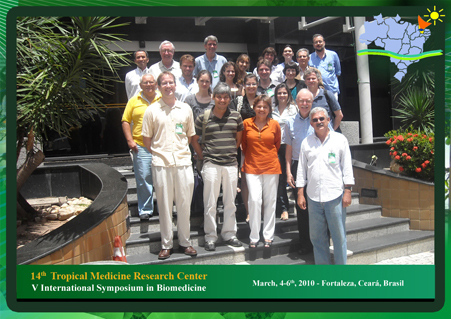
Opened by our host, Dr. Aldo A.M. Lima, the first session focused on enteric infections and malnutrition, with the first talk by Drs. Alexandre H. Binda and Ila F. N. Lima being on the high prevalence and genetic heterogeneity of E. coli pathotypes infecting young children in Northeast Brazil. This work showed that the majority of children are colonized with potentially pathogenic genotypes of E. coli, regardless the presence of overt diarrheal symptoms. This provoked excellent discussion about the potential importance of quantitative cultures or colony selection or of quantitative PCR to distinguish clinically significant levels of infection.
Next, Dr. Aldo Lima provided an overview of mechanisms and assessment of intestinal barrier disruption, first reviewing the results from an extensive trial of vitamin A, zinc, and glutamine with 8 blinded permuted blocks with all combinations and with placebo controls. These showed that low serum glutamine levels correlated closely with low serum arginine levels, and they correlated with impaired growth and disrupted intestinal barrier function. He also described the impressive impact of glutamine with vitamin A and zinc on improved verbal learning in the girls, but with less apparent effects in the boys. Finally he described improved growth (by HAZ) and WRAML learning scores after glutamine treatment, but primarily in the ApoE4+ children, suggesting a synergistic effect of glutamine in E4 children on growth and learning.
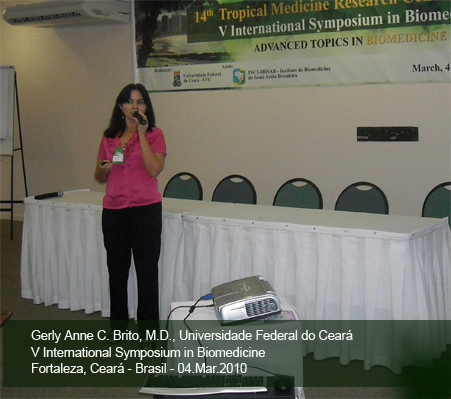
Then Dr. Sean Moore presented a reappraisal of diarrhea durations, showing that “prolonged” diarrhea (ie lasting >7d) accounted for fully half of the days of diarrhea, and, like “persistent” diarrhea (lasting >14d), prolonged diarrhea also identifies children in whom one can predict heavy diarrhea burdens, with some similar etiologies (ie Cryptosporidium and Shigella) as persistent diarrhea. These studies have key implications for identifying the high risk child in need of effective interventions to avoid the risk of long-term effects of heavy diarrhea burdens.
Dr. Reinaldo B. Oria next described how zinc and glutamine protect hippocampal brain development in a malnourished neonatal murine model, with both improved WAZ and HAZ and cliff avoidance with zinc (with or without glutamine). He also described significant hippocampal hypertrophic changes and neuronal swelling with malnutrition, and finally, improvement in synaptophysin levels and brain zinc and hippocampal GABA levels with glutamine treatment. Lastly in this session, Dr. Richard L. Guerrant described new models, host defenses and novel therapeutic approaches for enteric infectious etiologies of malnutrition, with similar impact on growth by cryptosporidial infections and EAEC infections in weaned C57Bl6 mice as seen in the neonatal mice, and with enhancement of infection and of impact on growth in protein deprived malnourished weaned mice. Furthermore, the weaned model allows assessment of adaptive as well as innate immune responses, and initial findings with a ClyA-CP-15 Salmonella vaccine given intranasally (in collaborations with Drs. Jim Galen at UMd and Greg Buck and Patricio Manque at VCU) shows for the first time, greatly impaired antibody responses to a mucosal vaccine in malnourished weaned mice, to open studies of mechanisms and interventions for mucosal vaccine failure (or reduced efficacy) in endemic areas (as seen for OPV and rotavirus vaccines). Initial studies also suggest alterations in cytokine and TLR expression with malnutrition, as well as CpG and even non-CpG ODN reduction of cryptosporidial infections in HCT-8 human colonic intestinal cells in vitro.
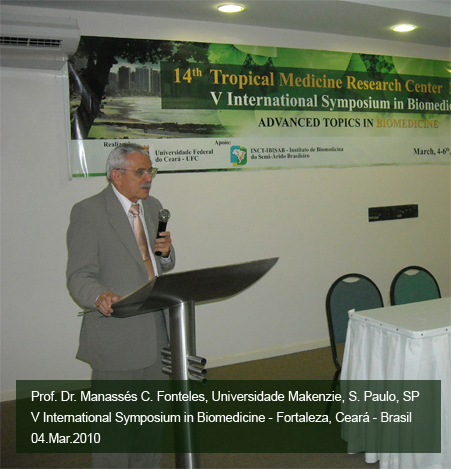
The afternoon session was opened by Dr. Warren D. Johnson Jr., who had been honored earlier for his lifelong commitment to collaborations in endemic tropical areas, speaking about his recent work with extraordinary and heroic colleagues in Haiti following the tragic earthquake there.
Then the second session, chaired by Drs. Johnson and Edgar Carvalho (Director of the TMRC) focused on the “Host Immunologic and Parasite Factors in the Pathogenesis of Dermal Leishmaniasis”, with the opening paper by Dr. Albert Schreifer addressing the role of Leishmania braziliensis polymorphisms in disease outcomes and distribution. He described impressive differences in clades of L. braziliensis in cutaneous, mucosal and disseminated cutaneous leishmaniasis as well as in geographic areas affected in the Corte de Pedra study field. This was followed by Dr. Edgar M. Carvalho, Director of the TMRC, describing protective and pathogenic immune responses in tegumentary leishmaniasis, with Th1 and inflammatory cell predominance in cutaneous and mucosal leishmaniasis, with increased CD8 CTLs and granzyme expression in ulcer lesions, but no defect in Treg cells, and disappearance of proliferative and cytokine responses over time after subclinical infections. Thus adaptive immune responses correlate with pathology, not protection, the latter for which innate immunity may be key. Then Dr. Lucas P. Carvalho described his work on the role of monocytes in the pathogenesis of cutaneous leishmaniasis, showing that ulcers are associated with “proinflammatory” monocytes expressing CD16 as well as CD 14 markers.
Finally in this session, Dr. Phil Scott from the University of Pennsylvania described how lymph node hypertrophy enables the host to maximize its response to leishmaniasis. Using his C57Bl6 murine model, he described how CCL21 chemokines stimulate CCR7 receptors on bystander (uninfected) T cells as well as dendritic cells. He also described the TLR9 dependence of this response and of protection, using TLR9ko mice.
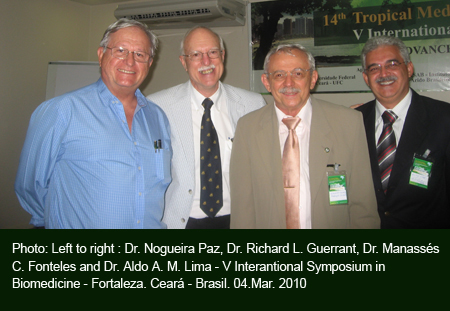
Chaired by Drs. Selma M.B. Jeronimo on Saturday morning, March 6th, the 3rd session focused on Leishmaniasis genetic determinants and diagnosis, with the opening talk by Dr. Mary E. Wilson being on “A species discriminating diagnostic quantitative PCR for leishmaniasis enumeration of kDNA copies in Leishmania species, strains and life stages.” This provides a web-described tool for assessment of infection severity in humans, dogs or sandflies, and opens new levels of epidemiologic and pathogenetic studies.
Then Dr. Selma Jeronimo described her observations over 20 years from the urban fringe on Leishmania chagasi infection in northeastern Brazil, suggesting that the infected sand fly vector Lutzomyialongipalpis is becoming more anthropophilic (or at least in settings of human crowding, human reservoirs become key hosts for sandfly infection). Remarkably, she described that up to 27% of female sandflies can be infected in endemic houses, and that some 30% of seronegative dogs in the area develop serologic evidence of infection over a 6-month follow-up period, and similar numbers are seropositive and revert to seronegative.
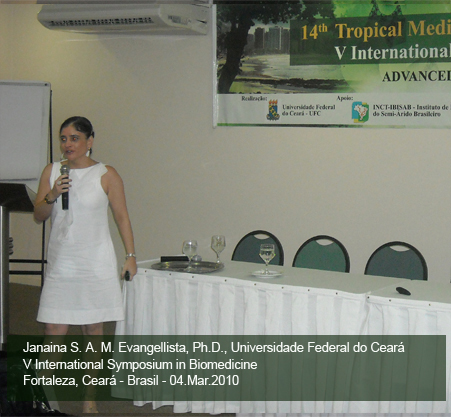
Dr. Carlos E.M. Gomes did not attend to describe his work on the ethnic structure of populations living in endemic areas for Leishmania and Mycobacterium infections in North and Northeast Brazil, so next, Bruna L. L. Maciel then described her work on the impact of Leishmania chagasi infection on the nutritional status and child development. Though HAZ and WAZ were not affected (in these slightly older children with VL infections –than in the early childhood diarrhea studies), L. chagasi infections were associated with reduced skin-fold thickness and body mass index, as well as reduced serum retinol (and reduced vitamin A stores, as assessed by binding competition assay) and with acute phase reactants, CRP and alphaGP. She also noted that children with higher weight at birth were protected, and that longer breastfeeding was associated with increased evolution to asymptomatic infection.
The final session on Tuberculosis and HTLV-1 infection included Dr. Lee W. Riley’s presentation on his seminal works on a post-exposure vaccine for tuberculosis, and its potentially important role in the tuberculosis eradication. Using his mce1 gene mutant strains, in particular his mce1R mutant (that inactivates the negative repressor to cause hyperexpression) that provides, after only 4 weeks of INH and PZA treatment in the Cornell Balb/c murine model, a model of reactivation after few weeks of latency, he used a mce1A piece to provide a vaccine that prevents reactivation. As animal studies, especially with M. tuberculosis, are difficult, he suggested that this vaccine may soon require direct testing in humans.
Dr. Edgar M. Carvalho then described his work on the viral and immunological factors in clinical manifestations associated with HTLV-1 infection. While HAM/TSP may only affect < 5% of HLV-1 infected subjects, up to 40-60% of previously thought “asymptomatic” patients have neurogenic bladder and correlated erectile dysfunction, even at younger ages of 30-40 years old. He further described associations of these urologic symptoms with increased TNF-alpha and IFN-gamma (and higher proviral loads), compared to HTLV-1 infections without these symptoms, suggesting similar immunopathogenesis to that seen with HAM/TSP. Implications for pentoxyphylline, thalidomide and rolipram therapy to reduce TNF and/or IFN (pentoxyphylline and rolipram reduce both; thalidomide only TNF) as well as planned clinical trials were suggested.
Dr. Richard L. Guerrant then made his closing remarks with the four-session overview over two days of the 14th TMRC meeting, impressively spanning the innovative and productive outcomes of the sharing collaboration and partnerships that have clearly fostered novel work. Work that has benefited tremendously the understanding of major endemic diseases afflicting the poor in Northeast Brazil. The richness of discussions throughout the meeting days across all groups was yet the best, as this Center matures into trusting open collaborations across multiple disciplines within Brazilian and US institutions. Close celebrations in Dr. Johnson’s honor in Salvador and in the Dr. Lima’s V. International Symposium in Biomedicine in Fortaleza not only took advantage of participant gathering from multiple institutions in Brazil and the US, but also bridged further the interdisciplinary and institutional collaborations, as exemplified by Dr. Peter Patrick, neuropsychologist from UVa and Drs Sidarta Ribeiro and Draulio de Araujo, neurobiologist modelers and MRI neurophysicists, respectively, from UFRN, who described neurocognitive and radiological brain assessments relevant to on going work on cognitive development with diarrhea, enteric infections and leishmaniasis, with possible collaborations in the future. Signed by Richard L. Guerrant, M.D., March 6, 2010.